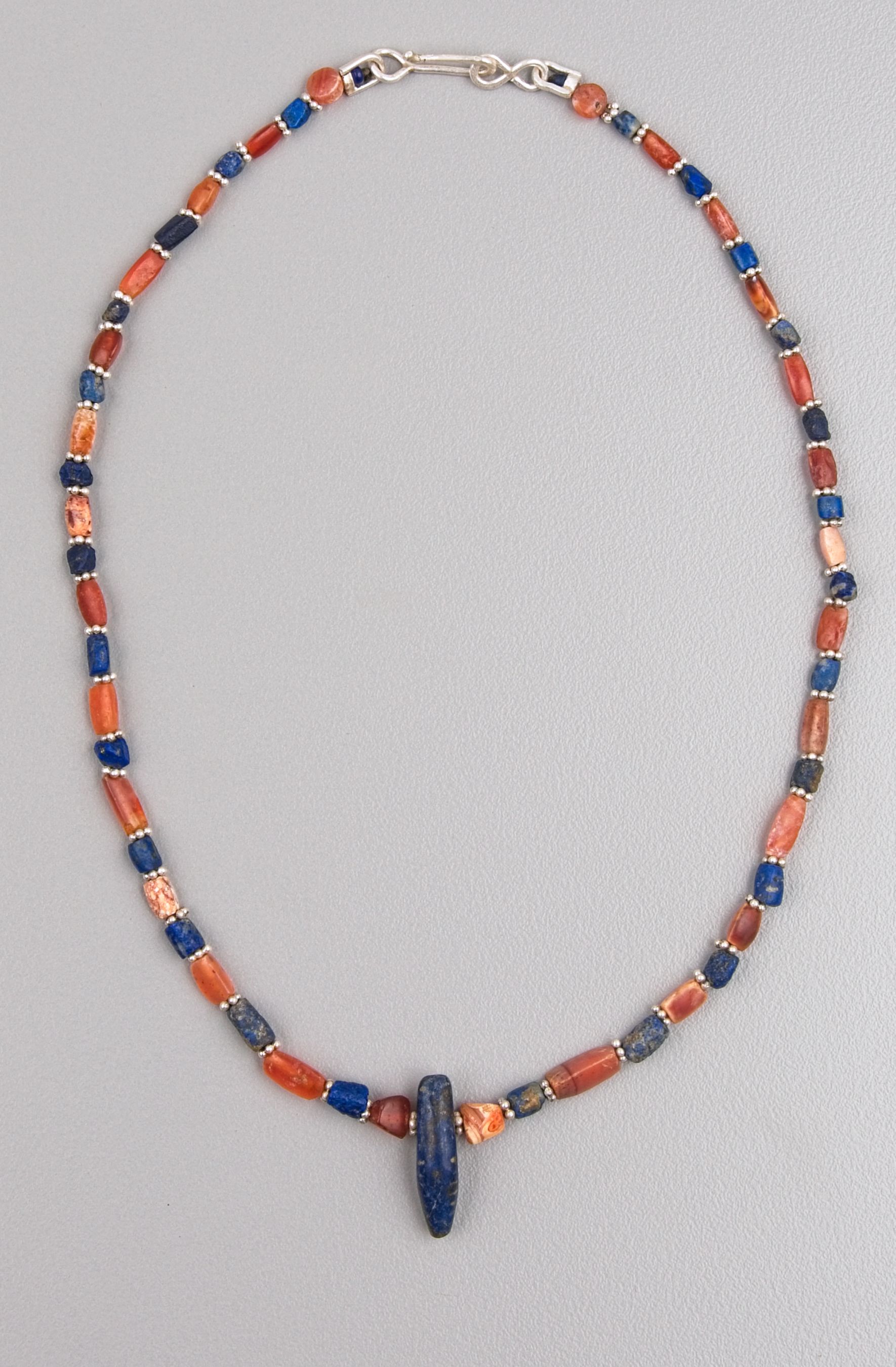Ancient Carnelian and Lapis Lazuli with Lapis Pendant and Silver
Collection:
Swat Valley
Material:
Carnelian, Lapis Lazuli, Silver
Size:
The necklace is 16 ¾ inches (40 cm) in length. The necklace weighs 16.3 gm.
Price:
$1,375.00
A necklace of twenty-eight carnelian beads alternating with twenty-seven lapis lazuli beads. The center bead is a pendant of lapis lazuli that may be a depiction of a larva, perhaps a silk worm (?). The stone beds are separated by granulated silver ring beads. The beading tips and clasp are also fine (999) silver. The lapis pendant is of a particular type from the Swat Valley area: typically double drilled, the pendants have a tapering shape the end in a blunt point, the center section bulges forward and to the sides and is marked across the front by parallel engraved lines which in this example have largely been worn away. There is usually a second set of parallel line on the front face above the drill hole; these have been entirely worn away. The pendant is single drilled which is atypical for the type. The pendant is 2.8 cm in height, 6 mm in width at the center and 8.3 mm in thickness. The drill hole diameter is 2.5 mm. The pair of carnelian beads facing the pendant are 6 mm in length and 6 mm in width with a drill hole diameter of 1 mm. They are four sided; each side is triangular with opposing sides oriented in the same direction so that the each pair face the opposite direction. The two carnelian beads that end the necklace are round tabular beads, 5 mm in length and width and 2.5 mm in thickness. The rest of the carnelian beads are three sided and taper slightly at the ends. They range in size from 1.1 cm in length to 7 mm in length at the back with the widths being 3 mm to 4.5 mm. The drill hole diameter is 1 mm. The lapis lazuli beads are approximately the same size with longer cylinder beads becoming roughly shaped barrel beads at the back of the necklace. The carnelian beads show some discoloration from being buried in an alkaline soil which causes a chemical reaction that produces an uneven whitening on the surface. Most of these beads have been only slightly affected; this patina is part of their history and authenticity. The beads come from the Swat Valley in what is now northern Pakistan and are around two thousand years old.
